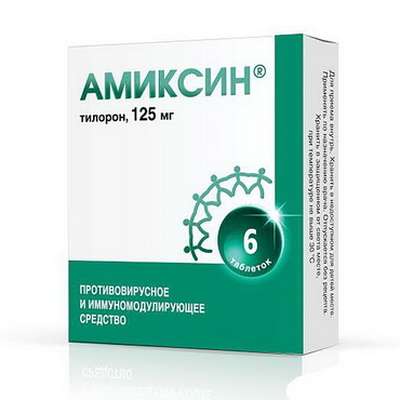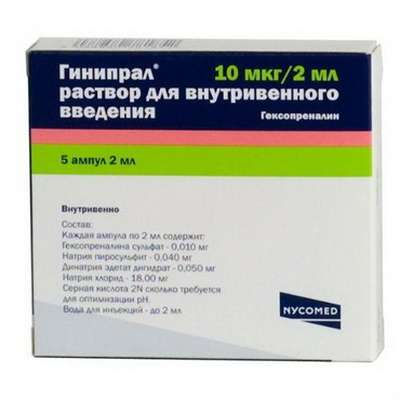Instruction for use: Trittico
I want this, give me price
Dosage form: coated tablets
Active substance: Trazodone*
ATX
N06AX05 Trazodon
Pharmacological groups:
Antidepressant
The nosological classification (ICD-10)
F32 Depressive episode: Adynamic subdepression; Astheno-adynamic subdepressive states; Asthenoadressive disorder; Astheno-depressive disorder; Asthenodepressive state; Astheno-depressive state; Major Depressive Disorder; Vyaloapatichesky depression with retardation; Double Depression; Depressive pseudodement; Depressive illness; Depressive mood disorder; Depressive disorder; Depressive mood disorder; Depressive state; Depressive disorders; Depressive syndrome; Depressive syndrome larviated; Depressive syndrome in psychoses; Depressed masks; Depression; Depression Depletion; Depression with the phenomena of inhibition within the framework of cyclothymia; Depression is smiling; Involutional depression; Involutionary melancholy; Involutional depression; Manic-depressive disorder; Masked Depression; Melancholic Attack; Neurotic depression; Neurotic depression; Shallow Depression; Organic depression; Organic depressive syndrome; Simple depression; Simple melancholic syndrome; Psychogenic depression; Reactive depression; Reactive depression with moderate psychopathological symptoms; Reactive depressive states; Reactive depression; Recurrent depression; Seasonal depressive syndrome; Severostatic depression; Senile Depression; Symptomatic Depression; Somatogenic depression; Cyclotymic depression; Exogenous depression; Endogenous depression; Endogenous Depressive Conditions; Endogenous Depression; Endogenous depressive syndrome
F52 Sexual dysfunction not caused by organic disorders or diseases: Reducing sexual desire; Maintaining the sexual activity of men and women;Sexual weakness in elderly men; Functional disorders of the sexual sphere in men; Sexual weakness; Disorders of libido; Disorders of potency; Sexual disorders in men
R52.2 Other permanent pain: Pain syndrome of non-rheumatic origin; Pain syndrome with vertebrogenic lesions; Pain syndrome with neuralgia; Pain syndrome with burns; Pain syndrome is mild or moderate; Perioperative pain; Moderate and severe pain; Moderately or mildly expressed pain syndrome; Moderate and severe pain syndrome; Ear pain with otitis; Neuropathic pain
Y47.1 Adverse reactions in the therapeutic use of benzodiazepines: Benzodiazepine dependence; Dependence on anxiolytics and hypnotics; Dependence on benzodiazepines
Z50.2 Rehabilitation for alcoholism: Alcoholism during remission
Z50.3 Rehabilitation for drug addiction: Benzodiazepine dependence
Composition and release form
Tablets of prolonged action 1 tab.
trazodone hydrochloride 150 mg
auxiliary substances: sucrose - 84.0 mg; wax Carnauba - 24.0 mg; povidone - 24.0 mg; magnesium stearate 6.0 mg
in a blister of PVC / aluminum foil 10 pcs .; in a pack of cardboard 2 or 6 blisters.
Description of dosage form
Biconvex tablets are white or white with a yellowish tint of color, oval in shape with two parallel risks on both sides.
Pharmachologic effect
Pharmacological action - antidepressant.
Pharmacodynamics
Trazodone, being a derivative of triazolopyridine, has a predominantly antidepressant effect, with some sedative and anxiolytic effect. Trazodone has no effect on MAO, which distinguishes it from MAO inhibitors, tricyclic antidepressants.
Quickly affects the mental (affective tension, irritability, fear, insomnia) and somatic symptoms of anxiety (palpitation, headache, muscle pains, frequent urination, sweating, hyperventilation).
Trazodone is effective in sleep disorders in patients with depression, increases the depth and duration of sleep, restores its physiological structure and quality.
Trazodone stabilizes the emotional state, improves mood, reduces the pathological craving for alcohol in patients who suffer from chronic alcoholism during the period of alcohol withdrawal syndrome, and also in remission. With abstinence syndrome in patients who are dependent on benzodiazepine derivatives, trazodone is effective in the treatment of anxiety-depressive conditions and sleep disorders. During the remission period, benzodiazepines can be completely replaced with trazodone.
The drug is not addictive.
It contributes to the restoration of libido and potency, both in patients with depression and in those who do not suffer from depression.
The mechanism of action of trazodone is associated with a high affinity of the drug to some subtypes of serotonin receptors with which trazodone enters antagonistic or agonistic interaction depending on the subtype, as well as with a specific ability to cause inhibition of serotonin reuptake.
The neutral capture of noradrenaline and dopamine affects little.
The drug does not affect the body weight.
Pharmacokinetics
Absorption of the preparation from the digestive tract after ingestion is high. Taking trazodone during or immediately after a meal slows down the absorption rate, lowers the Cmax of the drug in the blood plasma, and increases Tmax. Tmax of the drug is achieved after 1 / 2-2 hours after ingestion.
The drug penetrates through the histohematological barriers, as well as into tissues and liquids (bile, saliva, breast milk).
Binding to plasma proteins is 89-95%.
Trazodone is metabolized in the liver, the active metabolite is 1-m-chlorophenylpiperazine. T1 / 2 in the first phase is 3-6 hours, in the second phase - 5-9 hours. Most of the metabolized drug is excreted through the kidneys, with urine (about 75%) and completely completed 98 hours after the drug, with bile is excreted about 20%.
In vitro studies on human microsomes have shown that trazodone is mainly metabolized by cytochrome P450 CYP3A4.
Indications for Trittico
anxiety-depressive states of endogenous nature (including involutional depression);
psychogenic depression (including reactive and neurotic depression);
anxiety-depressive conditions against the background of organic diseases of the central nervous system (dementia, Alzheimer's disease, cerebral arteriosclerosis);
Depressive states with prolonged pain syndrome;
alcoholic depression;
benzodiazepine dependence;
disorders of libido and potency (including erectile dysfunction in depressive states).
Contraindications
hypersensitivity to the drug;
period of pregnancy;
lactation period;
children's age till 6 years.
With caution, the drug should be given to patients with AV blockade, myocardial infarction (early recovery period), arterial hypertension (correction of doses of antihypertensive drugs may be necessary), ventricular arrhythmia, history of priapism, renal and / or hepatic insufficiency. Patients under the age of 18 years, due to the possibility of developing a risk of suicidal behavior (suicidal plans, aggressiveness, a tendency to contradiction, anger).
Application in pregnancy and lactation
The drug is not recommended for pregnant women.
The drug is not recommended for use during breastfeeding.
Side effects
From the side of the central nervous system: increased fatigue, drowsiness, agitation, headache, dizziness, weakness, myalgia, discoordination, paresthesia, disorientation, tremor.
From the SSS and hematopoietic system: a decrease in blood pressure, orthostatic hypotension caused by adrenolitic action (especially in persons with vasomotor lability), arrhythmia, conduction disorders, bradycardia; leukopenia and neutropenia (usually minor) ..
From the gastrointestinal tract: dryness and bitterness in the mouth, nausea, vomiting, diarrhea, decreased appetite.
Other: allergic reactions, eye irritation, priapism (should stop taking the drug immediately and consult a doctor).
Interaction
Trazodone can enhance the effect of certain antihypertensive drugs and usually requires a reduction in their doses.
Simultaneous appointment with drugs that depress the central nervous system (including clonidine, methyldopa), enhances the effect of the latter.
Antihistamines and drugs with cholinolytic activity increase the anticholinergic effect of trazodone.
Trazodone enhances and prolongs the sedative and anticholinergic effects of tricyclic antidepressants, haloperidol, loxapine, maprotiline, phenothiazine, pimozidan and thioxanthin.
With the simultaneous administration of tricyclic antidepressants and trazodone, cardiovascular side effects may occur.
MAO inhibitors increase the risk of side effects.
When combined, increases the concentration of digoxin and phenytoin in the blood plasma.
In vitro studies of drug metabolism indicate the possibility of pharmacological interaction of trazodone with cytochrome P450 inhibitors CYP3A4, such as ketoconazole, ritonavir, indinavir and fluoxetine. Inhibitors of CYP3A4 can lead to a significant increase in plasma trazodone concentration, thereby increasing the likelihood of adverse events. Therefore, in case of administration in combination with potent CYP3A4 inhibitors, the dose of trazodone should be reduced.
When taking trazodone in combination with carbamazepine, trazodone concentration in plasma decreases. Therefore, patients taking trazodone and carbamazepine in parallel should be closely monitored.
Dosing and Administration
Inside, 30 minutes before or 2-4 hours after eating. Tablets should be taken whole, not liquid and squeezed with enough water.
The initial dose is 50-100 mg, once before bedtime. On the 4th day, an increase in the dose to 150 mg is possible. A further increase in dosage should be performed at 50 mg / day every 3-4 days, until the optimal dose is reached. A daily dose of more than 150 mg should be divided into 2 doses, with a smaller dose taken after lunch, and the main one - before bedtime.
The maximum daily dose for outpatients is 450 mg, for inpatients it is 600 mg.
Children 6-18 years: the initial daily dose of 1.5-2 mg / kg / day, divided into several receptions. If necessary, gradually increase the dose (with an interval of 3-4 days) to 6 mg / kg / day.
Elderly and weakened patients: the initial dose to 100 mg / day in several doses or once before bedtime. If necessary, it is possible to increase the dose (usually not more than 300 mg / day).
Treatment of disorders of libido: the recommended daily dose of 50 mg.
Treatment of erectile dysfunction: monotherapy - recommended daily dose - 150-200 mg, combined therapy - 50 mg.
Treatment of benzodiazepine dependence: the recommended treatment regimen is based on a gradual, sometimes within a few months, dose reduction of benzodiazepine. Each time, reducing the dose of benzodiazepine by 1/4 or 1/2 table, 50 mg of trazodone is simultaneously added. This ratio remains unchanged for 3 weeks, then proceed to a further gradual decrease in the dose of benzodiazepines until their complete cancellation. After this, reduce the daily dose of trazodone by 50 mg every 3 weeks.
Overdose
Symptoms: nausea, drowsiness, arterial hypotension, increased frequency and weighting of side effects.
Treatment: Conduction of symptomatic therapy (gastric lavage, forced diuresis). There is no specific antidote.
Special instructions
Since the drug has some adrenolytic activity, it is possible to develop bradycardia and reduce blood pressure. Therefore, care should be taken when prescribing the drug to patients with impaired cardiac conduction, AV blockade of varying severity, and recent myocardial infarction. When trazodone is used, a slight decrease in the number of white blood cells is possible, which does not require specific treatment, except in cases of severe leukopenia. Therefore, it is recommended to carry out studies of peripheral blood, especially if there are sore throats when swallowing and the appearance of fever.
The drug has no anticholinergic effect, so it can be prescribed to elderly patients with prostatic hypertrophy, angle-closure glaucoma, impaired cognitive function.
If there are prolonged and inadequate erections, you should consult your doctor.
Appropriate studies on the effectiveness of the drug in pediatrics have not been conducted, so the drug should be used with caution in individuals younger than 18 years of age. Doses for children under 6 years are not established.
During treatment should refrain from drinking alcohol.
Influence on the ability to drive vehicles, mechanisms. Since the drug has anxiolytic and sedative activity, it is possible to decrease attention and reaction speed. During treatment, one should refrain from engaging in potentially dangerous activities that require concentration of attention and rapid psychomotor reactions.
Conditions of leave from pharmacies
On prescription.
Storage conditions for Trittico
At a temperature of no higher than 25 ° C.
Keep out of the reach of children.
Shelf life of Trittico
3 years. List B.
Do not use after the expiry date printed on the package.

 Cart
Cart





